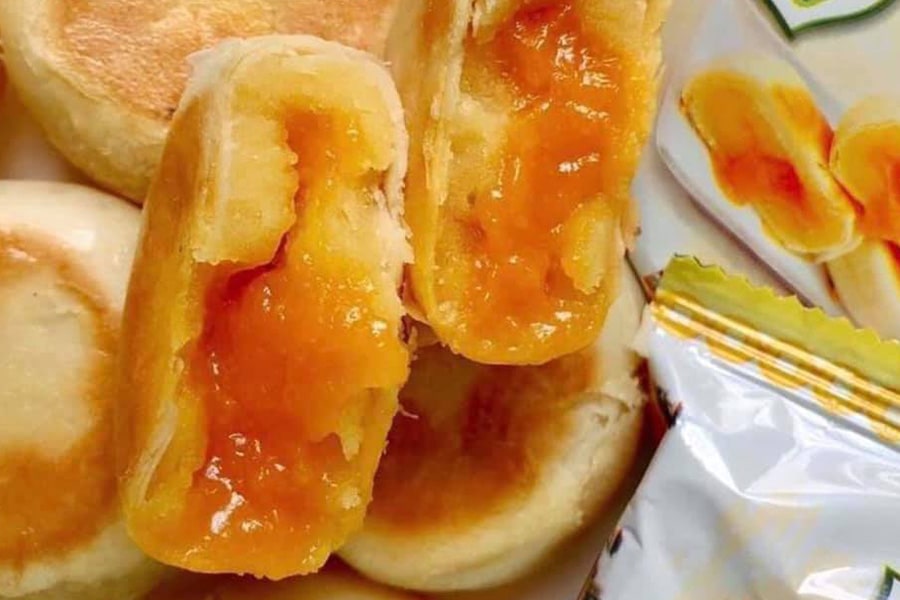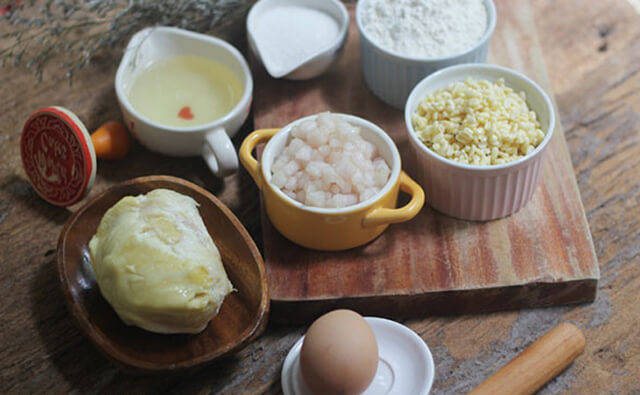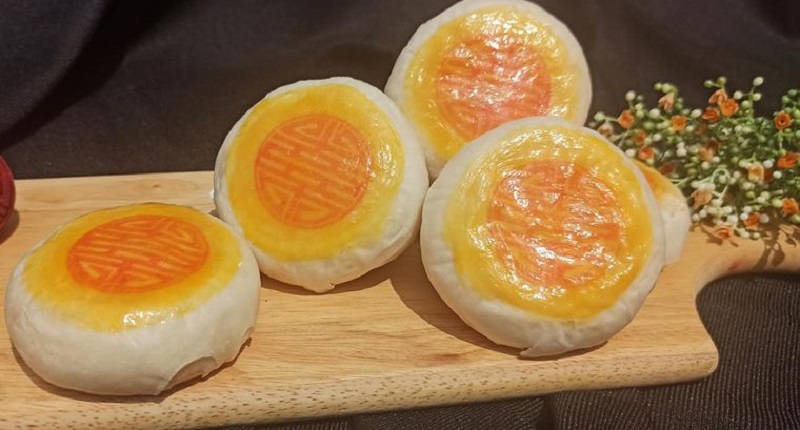Bánh Pía
1. What is Bánh Pía?
Bánh pía is a famous traditional pastry from Sóc Trăng province in southern Vietnam. Originally introduced by Chinese immigrants (the Teochew people), this cake has been adapted and perfected by the local Vietnamese, especially in Sóc Trăng, to create a distinctive version loved across the country.
The word "pía" comes from the Teochew dialect, meaning "pastry." Bánh pía is now one of the most iconic specialties of the Mekong Delta, often bought as a gift or souvenir.
2. Characteristics of Bánh Pía
Bánh pía is easily recognizable by its:
-
Round shape and multiple thin layers of pastry crust.
-
Golden, glossy exterior often stamped with red letters or symbols.
-
Soft, slightly chewy texture with a rich, sweet-salty filling inside.
It combines multiple flavors in one bite: creamy, sweet, salty, and a touch of bitterness from durian (if included).
3. Ingredients and Variations
The cake is made from simple but rich ingredients, including:
-
Wheat flour (for the multi-layered crust)
-
Mung bean paste
-
Salted egg yolks
-
Durian flesh (optional but traditional)
-
Lard or shortening
-
Sugar and oil
Popular variations include:
-
Bánh pía sầu riêng (durian) – the most traditional and sought-after version
-
Bánh pía đậu xanh (mung bean) – mild and sweet
-
Bánh pía trứng muối (salted egg yolk) – richer and more savory
-
Bánh pía chay (vegetarian) – no egg or animal fat, made for religious occasions
4. How It’s Made
Making bánh pía is a meticulous, multi-step process:
-
Crust preparation: The dough is kneaded, rested, and rolled into ultra-thin sheets to create the flaky outer layers.
-
Filling preparation: Mung beans are cooked and mashed with sugar and fat until smooth. If using durian, it's mixed into the bean paste.
-
Assembly: The filling is placed in the center, often with a salted egg yolk, and wrapped in multiple dough layers.
-
Stamping: Each cake is hand-stamped with red ink (Chinese characters or brand symbols).
-
Baking: Cakes are baked until golden, with a shiny surface.
5. How to Enjoy Bánh Pía
Bánh pía is best enjoyed:
-
With tea – especially green or jasmine tea, to balance the richness
-
As a snack or dessert, often shared during holidays or festivals
-
Sliced into wedges, due to its richness (one whole cake can be filling!)
Its sweet, buttery taste with a hint of savory yolk makes it both indulgent and comforting.
6. Cultural and Regional Importance
In Sóc Trăng, bánh pía is more than just a cake—it’s a cultural symbol. It represents the fusion of Chinese, Vietnamese, and Khmer culinary influences, especially in a diverse province like Sóc Trăng.
-
The cake is commonly used as an offering during ancestral worship and festivals.
-
Bánh pía is also a major local industry, with famous brands like Tân Huê Viên, Ngọc Yến, Vân Lành, producing millions of cakes yearly for both domestic and international markets.
-
It is a popular souvenir and a source of pride for the people of Sóc Trăng.
Conclusion
Bánh pía Sóc Trăng is a true taste of southern Vietnam—a pastry that brings together history, craftsmanship, and unique flavor. Whether you love durian or just want to try a classic Mekong Delta treat, this cake is an unforgettable experience for any food lover.




